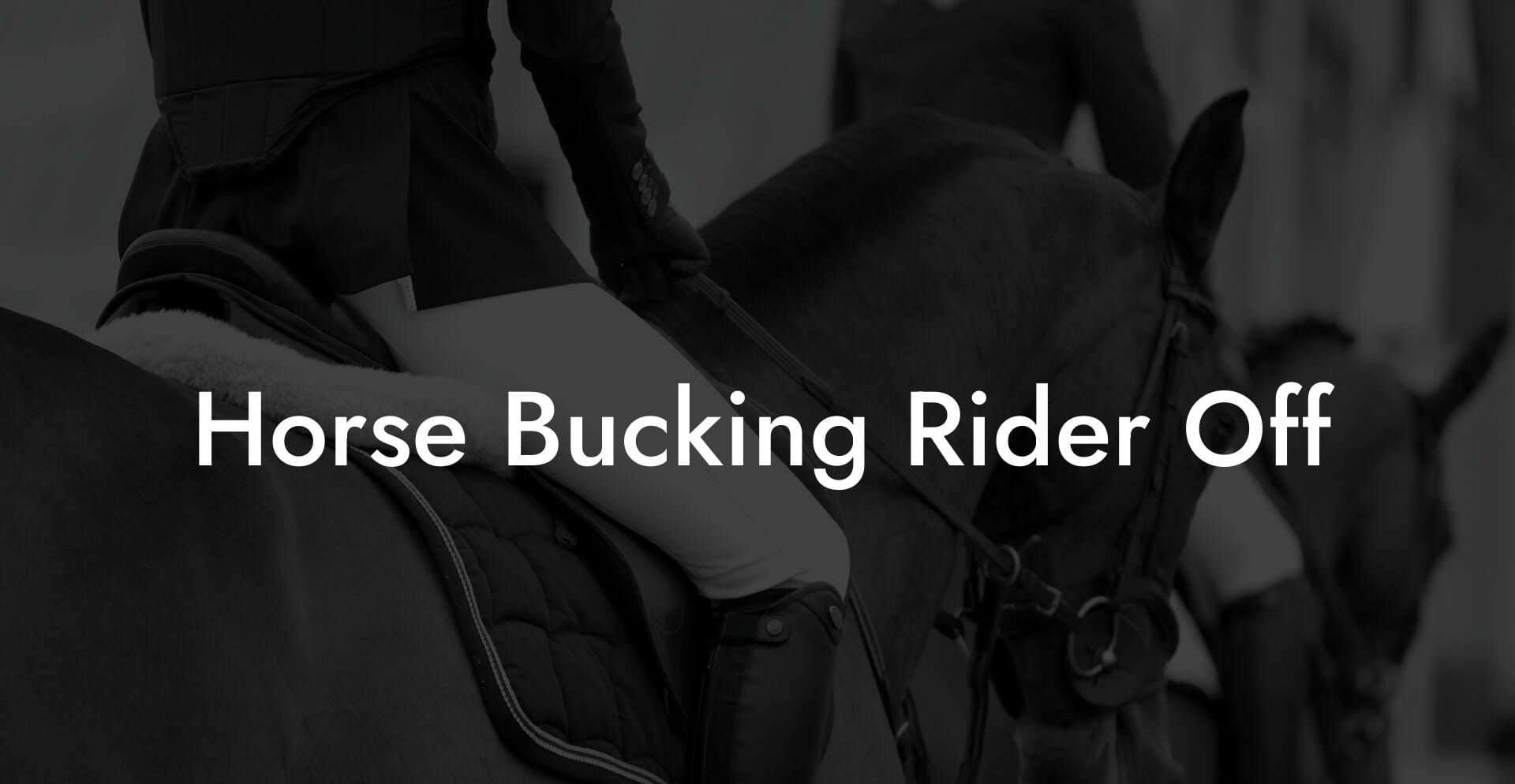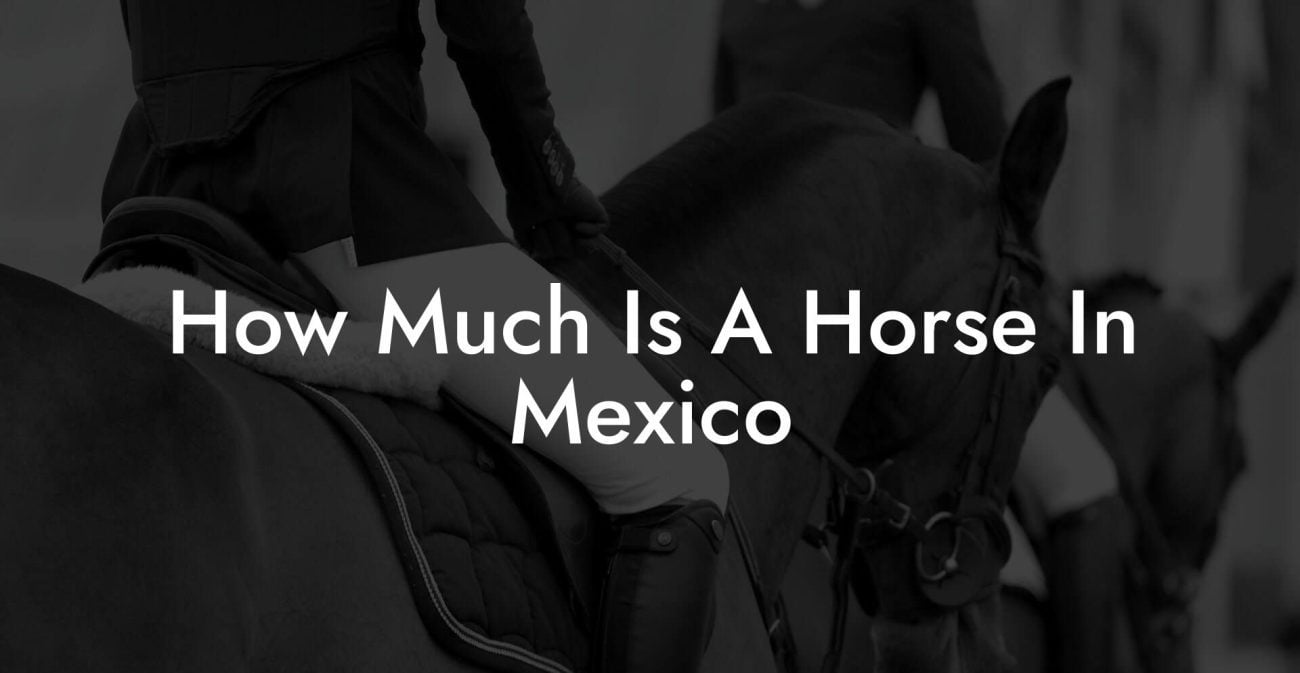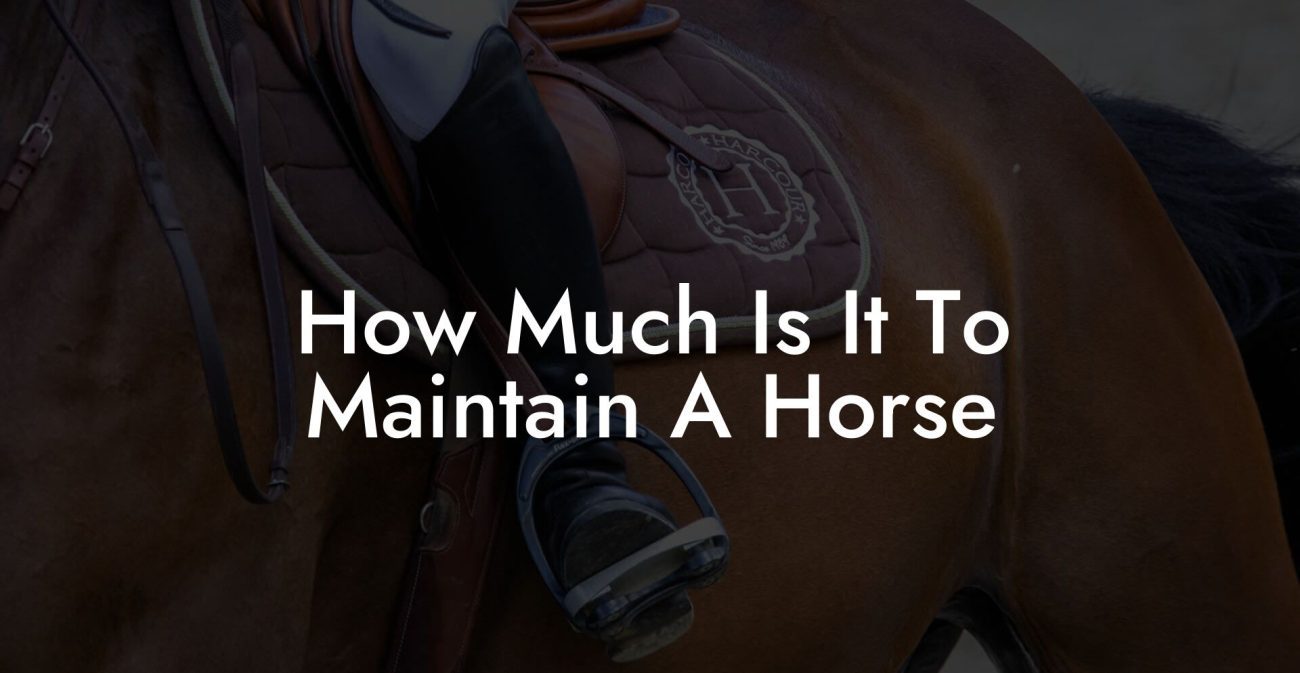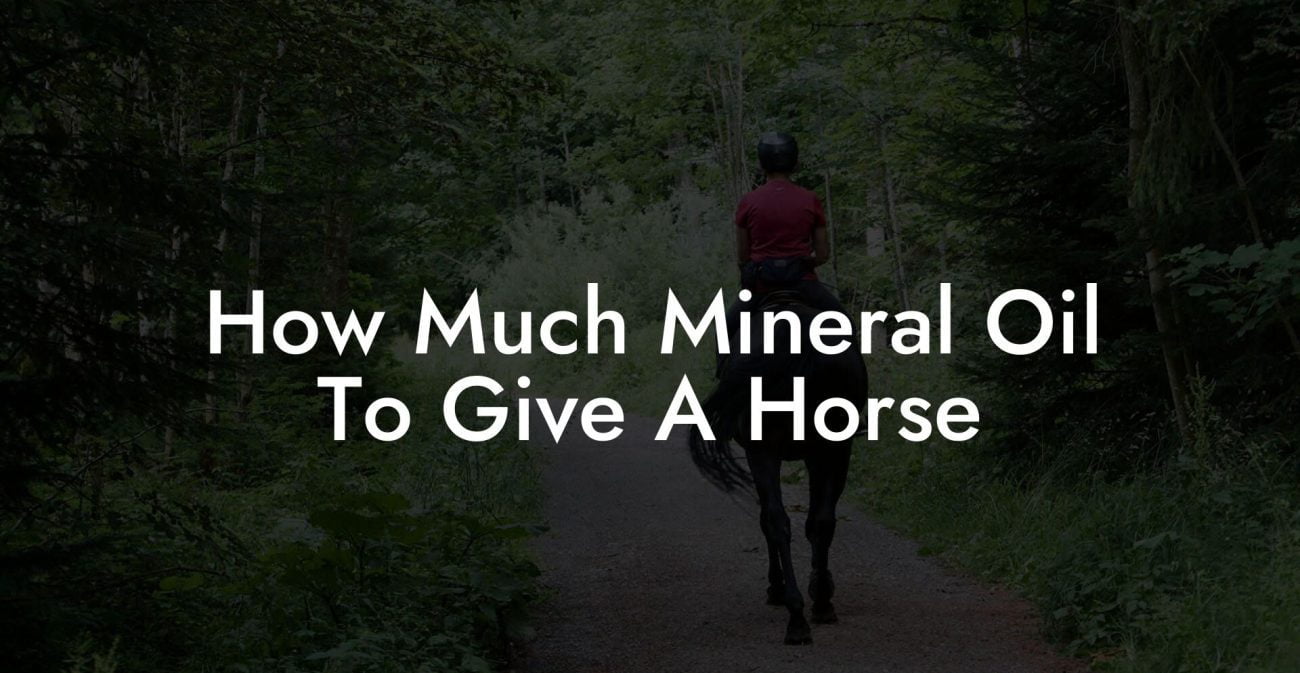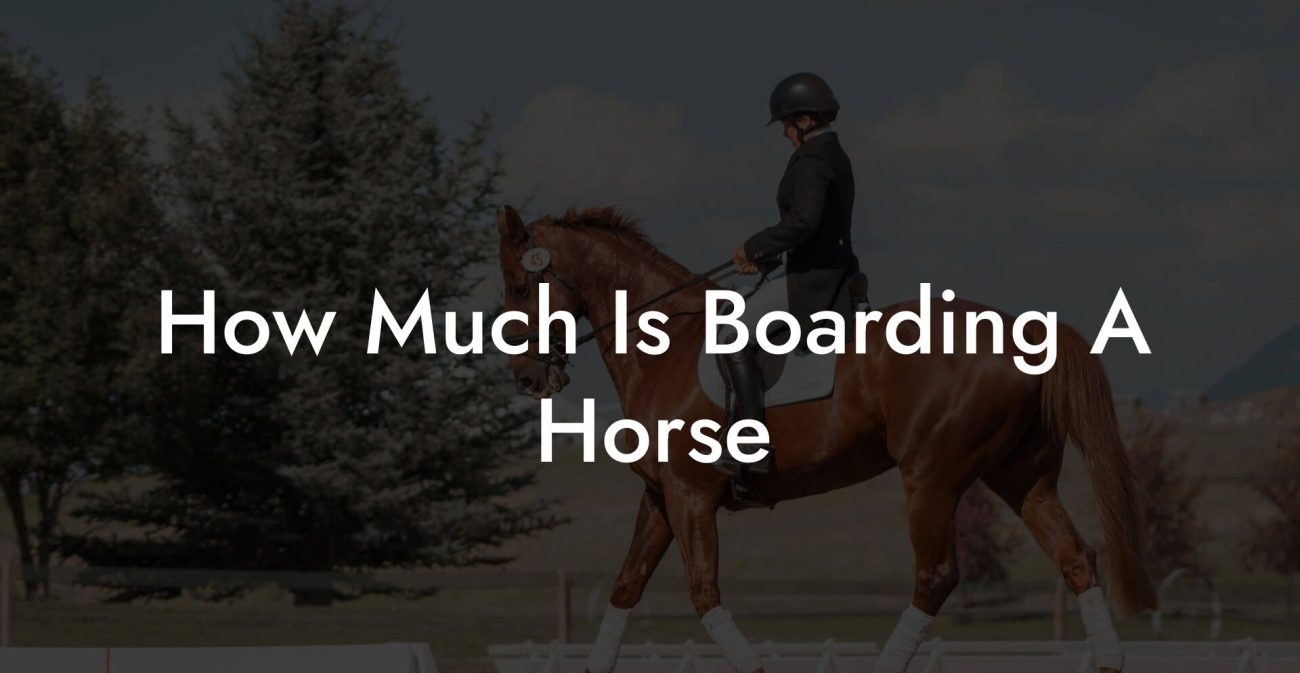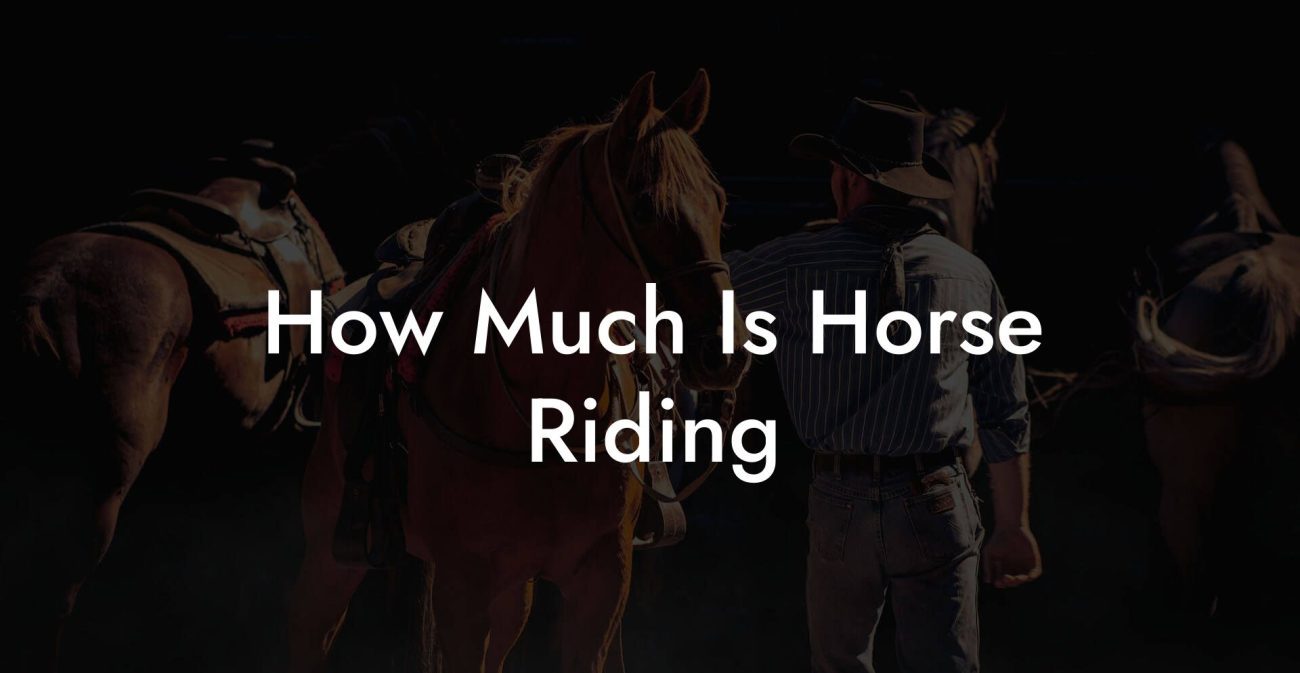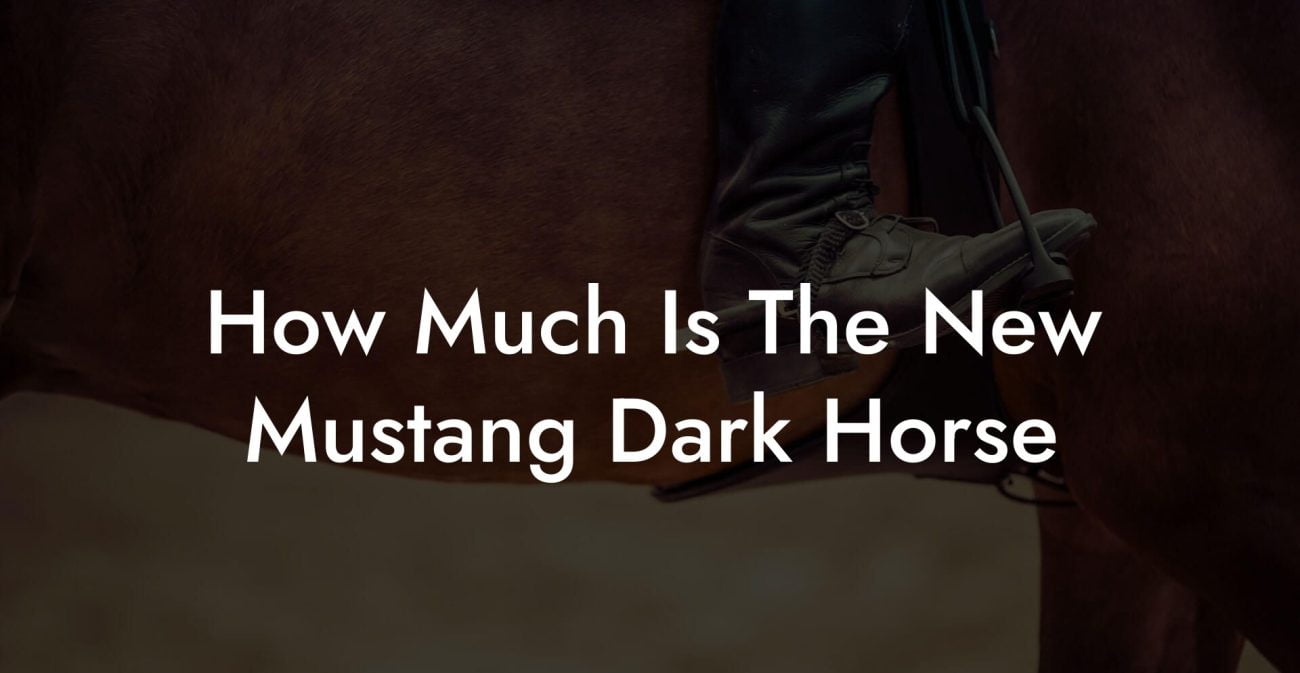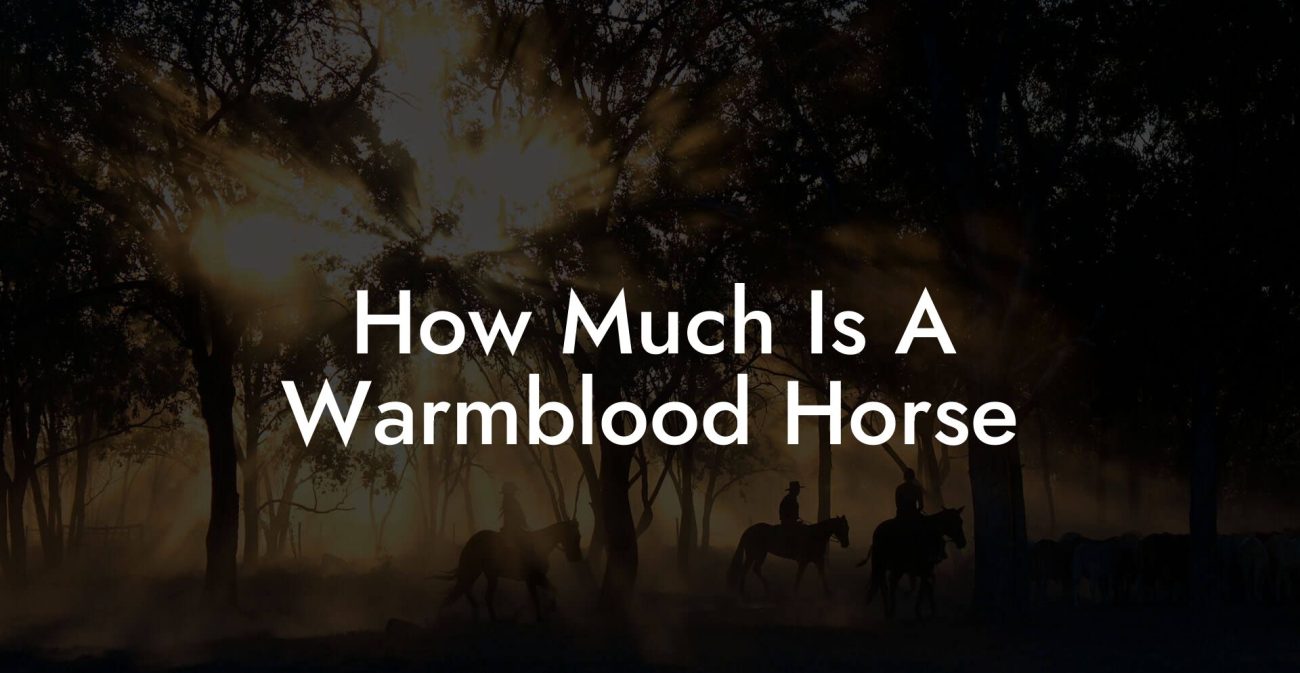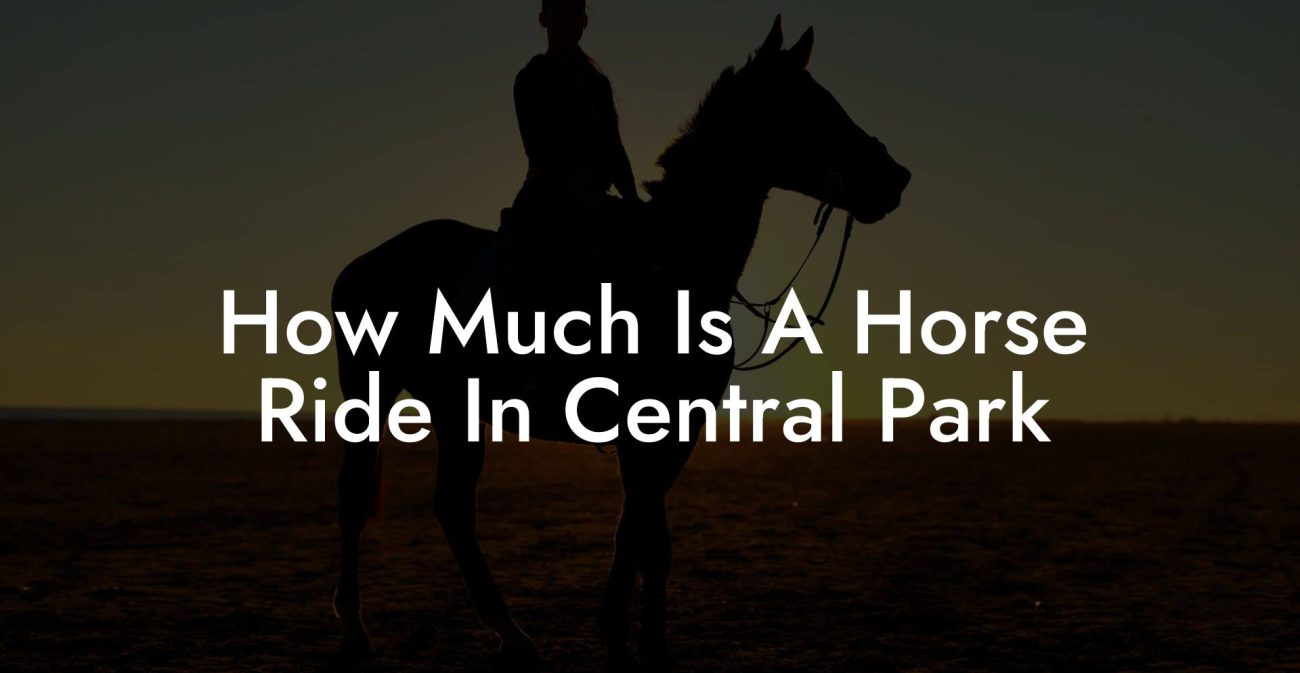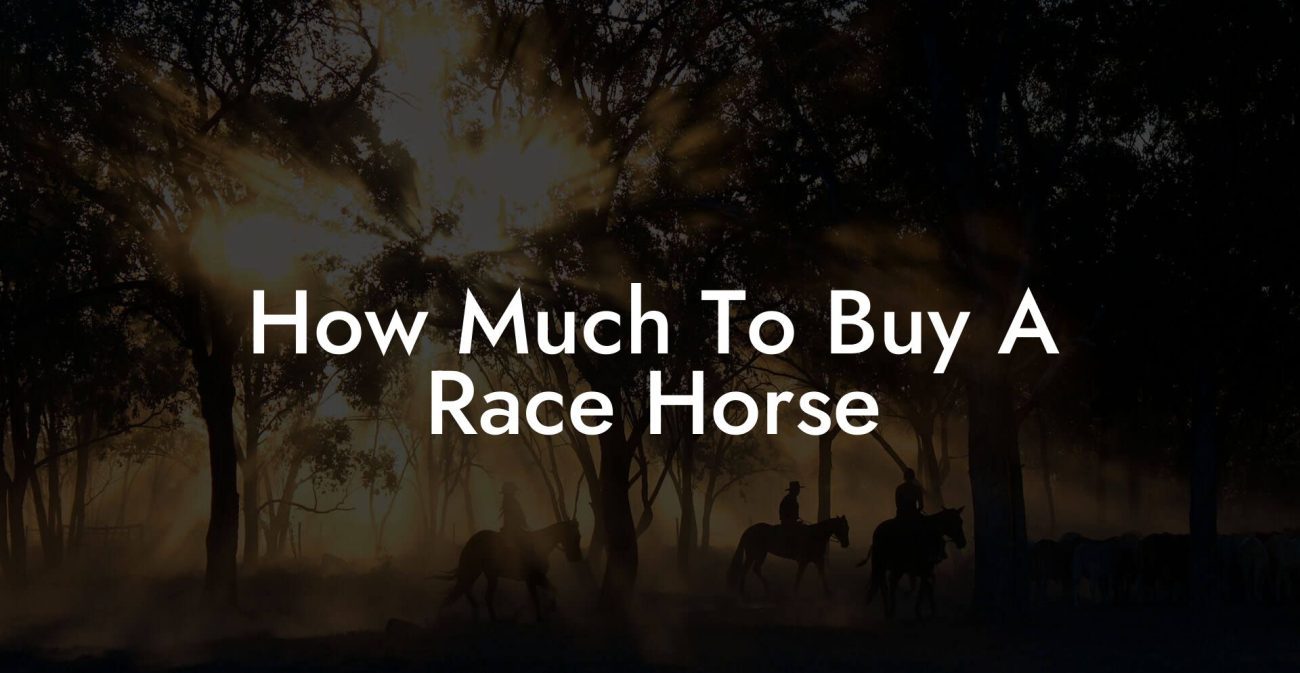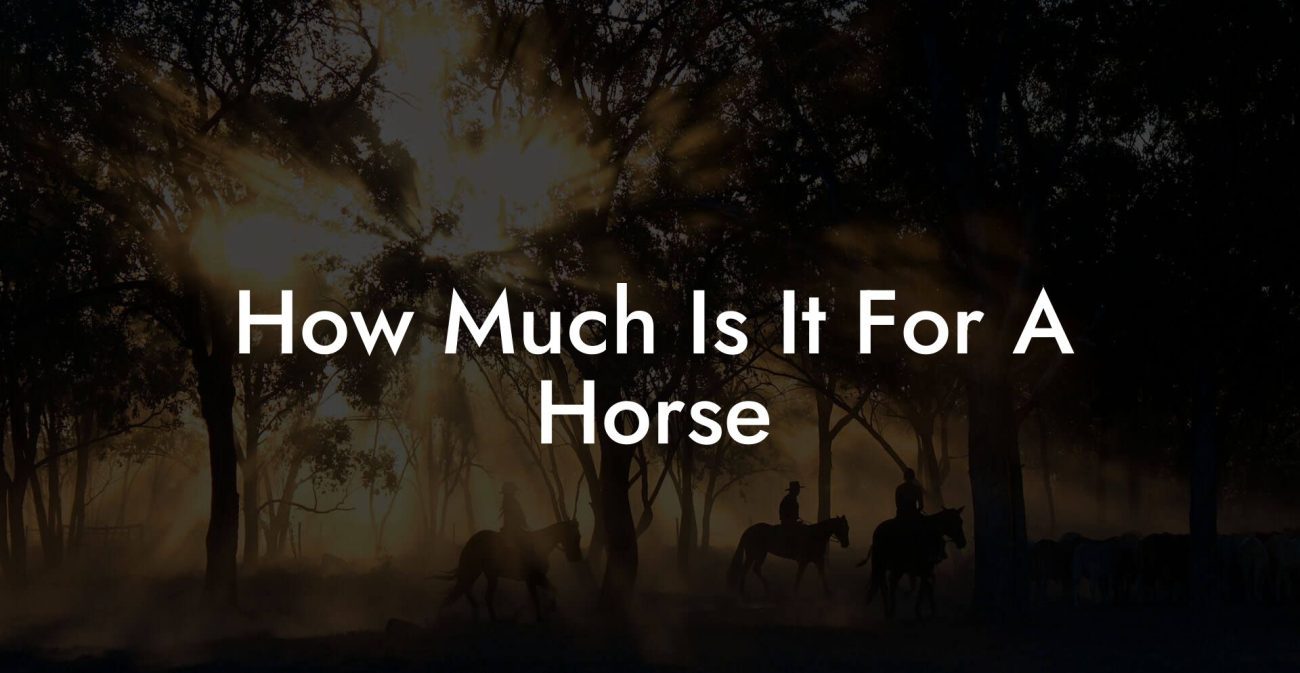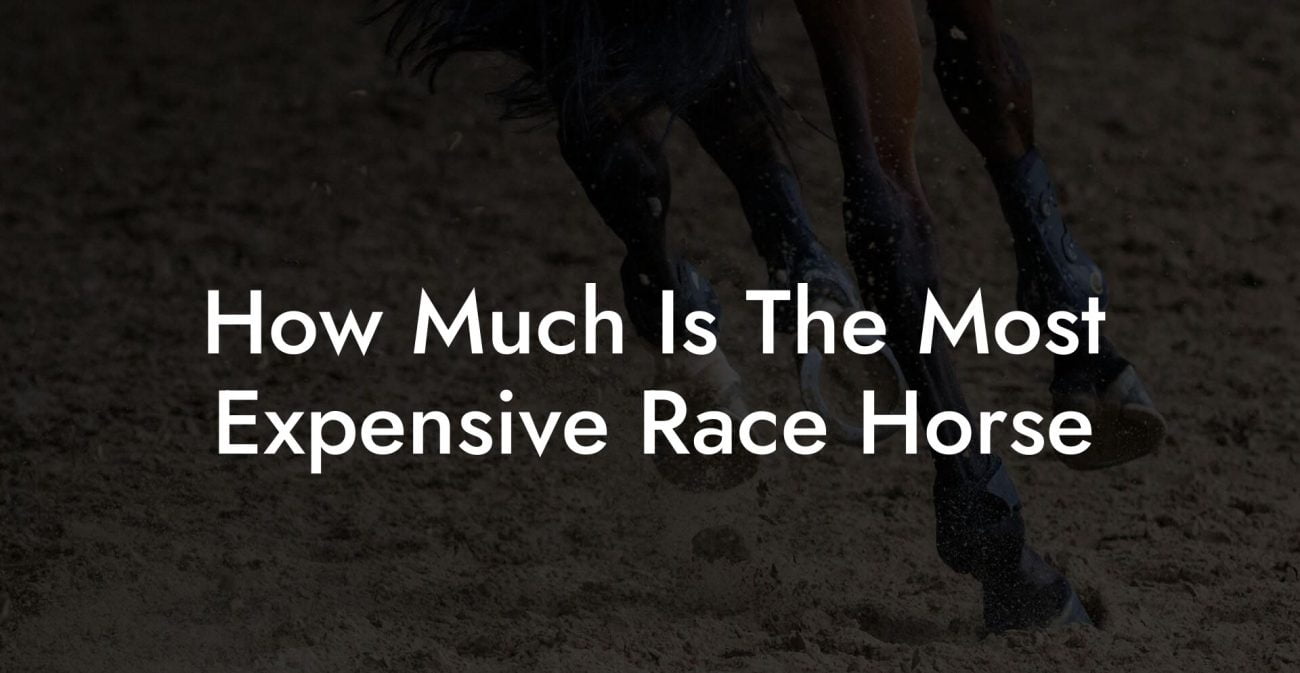When you’re out on the trail and your trusted steed suddenly decides that “riding” means a full-on acrobatic performance, essentially bucking you off with the grace of a rodeo champion, it can feel like an unexpected plot twist in your equestrian adventure. “Horse Bucking Rider Off” isn’t just an exclamation of surprise or mild indignation, it’s a wake-up call to dive deep into understanding your horse’s behavior, fine-tuning your communication, and ensuring that both you and your four-legged partner can ride in harmony. This comprehensive guide is here to bridge the gap between thrilling rides and safe practices, embracing quirky, real-life equine antics with a down-to-earth tone engineered for Gen-Z and millennial horse enthusiasts.
Quick Links to Useful Sections
- The Anatomy of a Buck: What Does It Really Mean?
- Decoding Equine Body Language: More Than Just a Buck
- Common Causes Behind the Buck: From Pain to Playfulness
- Harmonizing Safety and Trust: Preventing the Buck from Becoming a Hazard
- Preventative Measures and Rider Confidence
- Building Trust Through Training
- Training Techniques That Tame the Buck
- Groundwork and Desensitization
- Rider Skills and Communication
- Professional Guidance and Workshops
- Caring for Your Equine Partner: A Holistic Look at Horse health
- Gearing Up: Equipment That Can Save the Day
- Preventive Strategies for a Happier, Safer Riding Experience
- Regular Exercise and Stretching
- Routine Health and Wellness Checks
- Mindfulness in the Saddle
- Equine nutrition: Feeding Your Horse for Peak Performance
- Case Studies: Real-Life Tales from the Saddle
- The Jolt That Brought Clarity
- Revamping the Routine: A Lesson Learned
- A Collaborative Journey
- Resources and Community Support: Your Next Steps
- Equine Safety Tips: Expert Dos and Don’ts for a stable Ride
- Do:
- Don’t:
- Your Journey to a More Harmonious Ride: Embrace the Adventure
- Frequently Asked Questions About Horse Bucking and Equine Care
- The Road Ahead: Turn Every Buck into an Opportunity for Growth
The Anatomy of a Buck: What Does It Really Mean?
At its core, a horse bucking a rider off is more than just an unruly exit, it’s a multifaceted behavior that can signal anything from excitement and miscommunication to pain and discomfort. Just as you might express your emotions through your body language, horses communicate through powerful physical gestures. Understanding this behavior is crucial; it’s not about labeling your horse as “difficult” but rather about deciphering the hidden messages behind each buck.
In many cases, bucking is a natural response deeply ingrained in equine behavior. Historically, wild horses used bucking as a way to get rid of persistent insects or even as a display of strength and vigor during social interactions. Today, however, bucking can also be a byproduct of modern riding practices, unsuitable equipment, or even rider error. Recognizing the context in which bucking occurs can help you uncover the root causes and pave the way for more effective training and management.
Whether you’re a seasoned rider or just starting your journey into the equestrian world, unraveling the mystery behind a horse’s sudden burst of energy (or frustration) is the first step towards building a more respectful and responsive partnership. After all, every buck tells a story, one that you have the power to understand and influence.
Decoding Equine Body Language: More Than Just a Buck
Horses are incredibly expressive animals, fluent in a language that blends body posture, facial expressions, and behaviors. When your horse bucks, it’s not just a snap decision, it’s often the culmination of a series of signals. For example, a twitching ear, a sudden glance in a particular direction, or a change in gait might precede a buck, acting as subtle hints that your horse is overwhelmed, uncomfortable, or simply excited.
It’s essential to learn these signs as part of the broader lexicon of equine communication. If you notice your horse’s ears pinned back, tail swishing, or an unusual stiffness in its movements, these can be early indicators of stress or anxiety. Similarly, if your horse seems playful or overly energetic, a buck might simply be its way of expressing exuberance. The key is context: consider factors like the weather, your riding style, and the environment around you.
By dedicating time to understand your horse’s body language, you’re not only safeguarding yourself from unexpected fall-offs but also forging a stronger bond built on mutual understanding and respect. After all, communication is a two-way street, even if one of the road users has four legs and a penchant for creative exits.
Common Causes Behind the Buck: From Pain to Playfulness
The reasons why a horse might buck you off are as varied as the horse’s personality itself. In many cases, the behavior is triggered by a combination of physical discomfort, environmental stressors, and inadequate training routines. Let’s explore some of the most common causes:
- Physical Discomfort or Pain: Much like humans, horses can experience painful conditions ranging from dental issues to back problems. Ill-fitting saddles, sore muscles, or injuries can provoke a buck as an instinctive attempt to relieve discomfort.
- Inadequate Equipment or Poor Fit: A saddle that’s too loose or a bridle that doesn’t sit right can irritate the horse. The discomfort from worn-out tack or improper adjustments might prompt your horse to buck as if to say, “This isn’t quite right!”
- Fear and Anxiety: Horses are prey animals, and even a seemingly benign situation can trigger their flight response. Loud noises, unfamiliar surroundings, or even the wrong scent can send them into a panic, leading to a bucking reaction.
- Overexcitement or Boredom: Sometimes, it’s not pain or fear at all but pure, unbridled energy or a desire for play. A horse that’s been cooped up too long might express its pent-up energy by bucking.
- Rider Error: Believe it or not, sometimes the buck is a reaction to the rider’s missteps. Improper weight distribution, sudden movements, or even a lack of clear signals can confuse your horse, leading to an abrupt buck.
By identifying the specific triggers behind your horse’s buck, you empower yourself to address the underlying issues. Remember, the goal isn’t to “correct” your horse magically, but to work together in a way that communicates safety, trust, and mutual respect.
Harmonizing Safety and Trust: Preventing the Buck from Becoming a Hazard
Safety should be the number one priority for every rider, and understanding the dynamics behind bucking is central to preventing potential injuries. The old adage “better safe than sorry” rings particularly true in equestrian pursuits. What can you do to create a safer riding experience for both you and your horse?
Preventative Measures and Rider Confidence
First and foremost, invest in quality equipment that fits both you and your horse properly. A well-fitted saddle and bridle are not just luxuries, they’re necessities that can drastically reduce your horse’s discomfort and, by extension, the urge to buck. Regular tack checks and routine adjustments can go a long way in ensuring that every ride is as comfortable as possible.
Equally important is your riding technique. A relaxed, balanced position helps convey confidence and calm, which in turn reassures your horse. Concentrate on maintaining an even weight distribution and stay attuned to the subtle shifts in your horse’s posture. If you sense the telltale signs of impending bucking, slow down, communicate with your horse through gentle pressure, and create the space needed for a smoother transition.
Building Trust Through Training
Training is the cornerstone of preventing bucking incidents. Consistent, patient communication with your horse can transform a high-energy, unpredictable bucker into a responsive partner. Start training in a controlled environment, gradually exposing your horse to new stimuli and riding scenarios. By incrementally increasing the complexity of your rides, you can help your horse build confidence and learn to manage its impulses.
Remember, trust is a two-way street. As your horse becomes more confident in your leadership, you’ll find that it’s less likely to exhibit defensive behaviors like bucking off. Incorporating positive reinforcement, offering praise, treats, or gentle pats, can encourage your horse to adopt more cooperative behavior. Over time, this mutual trust lays the foundation for a more harmonious riding experience.
Training Techniques That Tame the Buck
When it comes to tackling bucking, effective training techniques can be your best ally. A combination of patience, consistency, and understanding will help you instill calm and discipline in your horse. Let’s dive into some practical methods:
Groundwork and Desensitization
Before even mounting up, invest time in groundwork exercises. These routines help your horse become accustomed to your presence and build a solid foundation of trust. Start with simple tasks such as leading, stopping, and turning, then gradually introduce more challenging scenarios. Groundwork establishes clear communication channels and familiarizes your horse with your expectations.
Desensitization is another powerful tool in your training arsenal. It involves exposing your horse to various stimuli, whether it’s a fluttering tarp, a sudden noise, or unfamiliar objects, in a controlled, calm manner. Over time, your horse learns that these stimuli are not threats but parts of the environment. This process alleviates anxiety and reduces the likelihood of a buck triggered by fear.
Rider Skills and Communication
Sometimes, the difference between a smooth ride and an unexpected buck lies in the rider’s technique. Emphasize riding fundamentals like proper posture, balanced rein use, and consistent cues. A rider who communicates clearly and confidently is more likely to foster a sense of security in the headstrong equine partner.
Additionally, consider integrating exercises that specifically target the moments before a buck. For instance, practicing transitions between gaits in a controlled setting can help your horse adjust to changes in speed and intensity without resorting to bucking. Remember: every ride is a learning opportunity, both for you and your horse.
Professional Guidance and Workshops
Don’t underestimate the value of professional help. Sometimes, an experienced trainer or equine behaviorist can provide insights that transform your training routine. Group clinics, workshops, and personalized coaching sessions offer the dual benefit of professional expertise and community support. These sessions not only address specific issues like bucking but also enable you to network with fellow riders facing similar challenges.
While training takes time and effort, each breakthrough reinforces the idea that a coordinated, patient approach is the ultimate antidote to erratic bucking behavior. Over time, with consistent training, your horse can learn to channel its energy into a more productive and safe riding style.
Caring for Your Equine Partner: A Holistic Look at Horse health
Beyond training and technique, the overall well-being of your horse plays a pivotal role in its behavior. Just like us, a happy and healthy horse is less prone to stress-induced reactions, including bucking. Focusing on holistic care means paying attention not only to physical health but also to mental, emotional, and even environmental aspects.
Regular veterinary check-ups should be part of your routine to monitor your horse’s health. Issues such as dental problems, lameness, and digestive disturbances can cause discomfort and lead to reactive behavior. Addressing these concerns early with the guidance of a veterinarian or an equine chiropractor can preempt potential triggers that result in a buck.
Equine massage and physical therapy are also increasingly popular, as they improve muscle tone, enhance circulation, and help relieve tension. A well-cared-for horse exhibits more relaxed behavior both in the arena and out in the paddock.
Mental health matters too. Horses are sensitive creatures that thrive in a positive, predictable environment. Ensuring that your horse has adequate turnout time, companionship, and a stress-free routine can contribute to a calmer demeanor overall. A horse that’s mentally and emotionally balanced is less likely to resort to bucking as a form of escape or communication.
Gearing Up: Equipment That Can Save the Day
Let’s face it, sometimes, a buck can be mitigated or even prevented by having the right gear. Investing in high-quality, properly fitted equipment is not just about luxury, it’s about safety and communication. A good saddle isn’t merely a seat; it’s an extension of your communication with your horse.
Modern saddlery is designed with ergonomics in mind, distributing your weight evenly and minimizing pressure points that could irritate a horse’s back. There are also specialized anti-bucking saddles and bridging pads that help absorb shock and reduce the incidence of bucking. Similarly, well-fitted bridles and bits can enhance your ability to communicate clearly with your horse, reducing confusion and the consequent risk of bucking.
Don’t forget the importance of regular equipment maintenance. Inspect your tack frequently for signs of wear and tear, and replace or adjust items as necessary. A small tweak in a strap or a quick cleaning of the saddle can sometimes be the difference between a smooth ride and an unexpected dismount.
Preventive Strategies for a Happier, Safer Riding Experience
The journey to preventing those heart-stopping moments when your horse bucks you off starts long before you hit the saddle. It’s a continuous process that blends education, practice, and a healthy respect for the animal’s nature. Implementing preventive strategies is all about leveling up your overall riding experience.
Regular Exercise and Stretching
Much like the importance of stretching in human athletics, staying limber is crucial for horses as well. Establish a routine that includes both general physical exercises and specific stretches that target muscle groups prone to tension. A well-exercised horse is less likely to lash out spontaneously and more able to manage built-up energy in a controlled manner.
Routine Health and Wellness Checks
Proactive health management is your first line of defense. Regular vet visits, dental check-ups, and wellness assessments ensure that your horse’s discomfort is identified and addressed before it manifests as behavioral issues. A horse that feels good will naturally be less inclined to buck off its rider.
Mindfulness in the Saddle
Incorporating mindfulness techniques into your riding routine can help both you and your horse stay centered. Simple breathing exercises before a ride can reduce anxiety and foster a calm atmosphere. For the horse, a calm rider translates to a more relaxed ride, lessening the chance for a sudden burst of bucking.
By making these preventive measures a regular part of your routine, you’re not just responding to incidents of bucking, you’re actively creating an environment that minimizes their occurrence in the first place.
Equine nutrition: Feeding Your Horse for Peak Performance
Nutrition is one of those underrated aspects of horse care. A balanced, nutrient-rich diet does wonders for your horse’s physical and mental well-being. Just as athletes carefully plan their diets to optimize performance, your equine partner benefits tremendously from a well-considered feeding regimen.
Start with high-quality forage, whether that’s fresh pasture, hay, or a mix of both, and complement it with grains, vitamins, and minerals that address your horse’s specific health requirements. Consulting with a nutritional expert or your veterinarian can help you design a diet that supports muscle recovery, reduces inflammation, and sustains overall vitality.
Don’t shy away from incorporating trendy superfoods, think beet pulp, flaxseed, or specially formulated supplements, that can boost energy and enhance coat shine. A well-nourished horse is not only healthier but also shows improved behavior and a more balanced temperament, reducing the likelihood of stress-induced bucking.
Case Studies: Real-Life Tales from the Saddle
It’s one thing to read about training and preventive measures in theory, but real-life stories bring these strategies to life. Across the equestrian community, countless riders have shared their journeys from frustration to triumph over unexpected bucking episodes.
The Jolt That Brought Clarity
Sarah, a young rider with a passion for adventure, often found herself tumbling off her spirited mare, Rebel. Initially, she chalked the mishaps up to Rebel’s “sassy style,” but soon realized that the bucking was a communication breakdown. Through a dedicated regimen of groundwork, saddle adjustments, and gradual desensitization exercises, Sarah transformed her approach. Rebel responded positively to the changes, eventually evolving from a bucking hazard into a reliable, confident partner.
Revamping the Routine: A Lesson Learned
Marcus, a millennial enthusiast balancing a busy urban lifestyle with his love for riding, encountered recurring bucking incidents that left him both injured and demoralized. Rather than giving up, he embarked on a comprehensive overhaul of his riding practices. By investing in a custom-fitted saddle, scheduling regular veterinary check-ups, and even attending workshops on modern horsemanship, Marcus not only reduced the bucking but also deepened his connection with his horse. His story is a testament to how modern, mindful equine care can rejuvenate a once-frustrating riding experience.
A Collaborative Journey
In yet another inspiring case, a small community of riders came together to share their experiences with bucking behavior. Through social media groups, local meet-ups, and training clinics, they pooled resources and insights. Together, these riders discovered that the key to overcoming the buck was not an expensive gadget or one-size-fits-all advice, it was mutual support, continuous learning, and an openness to change. Their collaborative spirit continues to drive innovative training methods that benefit the entire community.
Resources and Community Support: Your Next Steps
Embarking on a journey to tame the buck and enhance your riding experience is far easier when you’re not alone. Riding communities, both online and offline, have blossomed into invaluable hubs of support, advice, and shared experiences. Whether you’re a beginner seeking guidance or a seasoned rider with a few scar stories of your own, these resources can help you navigate through the nuances of equine behavior.
Look for local equine clubs, online forums, and social media groups dedicated to modern horsemanship. Many of these communities host regular clinics, workshops, and Q&A sessions with equine behaviorists. Engaging with these resources can boost your confidence, provide alternative training tips tailored to your unique circumstances, and even introduce you to innovative equipment that syncs perfectly with your needs.
Additionally, numerous websites and blogs are dedicated exclusively to sharing success stories, training ideas, and updates on the latest in equine health research. By staying connected, you can remain at the cutting edge of new techniques and join a movement that values both safety and passion in riding.
Remember, every rider’s journey is unique, embrace the ups and downs, celebrate incremental successes, and lean on your community when the riding gets rough. Your adventure in equine care has just begun, and the support around you is a valuable resource in becoming the rider you aspire to be.
Equine Safety Tips: Expert Dos and Don’ts for a stable Ride
No guide on preventing a bucking incident would be complete without a straightforward list of dos and don’ts from seasoned equestrians. Here are some expert tips to keep in mind:
Do:
- Invest in quality, well-fitted equipment and maintain it regularly.
- Learn and respect your horse’s body language signals.
- Practice regular groundwork and desensitization exercises.
- Schedule routine health checks with your vet and equine specialists.
- Stay calm, confident, and communicative when riding.
- Engage in mindfulness techniques to reduce both your and your horse’s stress.
- Connect with a supportive riding community for fresh insights and guidance.
Don’t:
- Ignore the signs of discomfort or distress in your horse.
- Rush into riding without ensuring proper warm-ups for both you and your animal.
- Rely solely on quick fixes when long-term training adjustments are needed.
- Dismiss the importance of a balanced diet and overall wellness in your horse’s routine.
- Underestimate the value of professional and peer support in tackling challenging behaviors.
Implementing these safety tips can transform not only your riding sessions but also the overall well-being of your horse. Creating a culture of care and ongoing learning is the most effective way to foster a ride environment that’s safe, respectful, and full of satisfying moments on horseback.
Your Journey to a More Harmonious Ride: Embrace the Adventure
In the end, experiencing a bucking episode might feel like an unexpected plot twist, but it’s also a golden opportunity, a moment to pause, listen, and understand your horse more deeply. By combining tried-and-true training methods, cutting-edge equine care innovations, and a commitment to mutual respect, you transform each ride into a learning adventure.
Every tumble and every graceful recovery is a chapter in your evolving story with your horse. Embrace the quirks, celebrate the breakthroughs, and remember that every ride, whether smooth or bumpy, is a step towards mastering the art of horsemanship. Your journey in equine care is as much about personal growth as it is about riding prowess, blending passion, humor, and practical wisdom into a unique narrative that’s entirely your own.
Now is the time to channel your inner equestrian innovator, explore new methods, and engage deeply with the vibrant community of riders who share your enthusiasm. Together, you and your horse can unlock the secret to riding in harmony, a dynamic balance of safety, skill, and the joy of adventure.
So next time your horse seems ready to perform its own version of a rodeo act, remember: every buck is a call for better communication and a chance to deepen your partnership. Gear up, take a deep breath, and transform that jumpy moment into one of growth, learning, and, yes, even a bit of fun.
Frequently Asked Questions About Horse Bucking and Equine Care
To wrap up this ultimate guide, here are some of the most common questions riders have about bucking incidents and how to manage them effectively. We’ve also integrated structured FAQ data to help you find answers fast!
1. Why does my horse buck me off?
Horses may buck due to physical discomfort, fear, excitement, or even rider error. It’s often a reaction to underlying issues such as ill-fitting equipment, pain, or environmental stressors.
2. How can I tell if my horse’s bucking is due to pain?
Look for other signs of discomfort such as reluctance to move, back arching, or subtle changes in behavior. A veterinary check-up can help determine if there is an underlying medical problem.
3. What should I do when I feel a buck coming on?
Stay calm, adjust your position, and try to communicate reassurance through steady, gentle cues. Slowing down and re-establishing a balanced posture can help diffuse the situation.
4. Is specialized equipment really necessary to prevent bucking?
Quality, well-fitted gear such as saddles, bridles, and supportive pads are crucial. Proper equipment reduces discomfort and enhances communication between you and your horse.
5. Can training completely stop bucking behavior?
While training can significantly reduce bucking, it’s important to remember that horses are living animals with moods and instincts. Consistent training and proper care can minimize incidences, but occasional bucking might still occur in high-energy moments.
6. How does proper nutrition influence bucking behavior?
A balanced, nutrient-rich diet ensures muscle and joint health, reducing physical discomfort. Proper nutrition also supports overall energy levels and can help keep stress-induced behaviors, such as bucking, in check.
7. Are group clinics and riding communities beneficial?
Absolutely! Learning from and sharing experiences with fellow riders can provide new insights, strategies, and even emotional support during challenging riding experiences.
8. When should I consider professional training help?
If bucking becomes a frequent issue and you’re struggling to identify the cause or implement preventative measures, seeking help from an experienced trainer or equine behaviorist is highly recommended.
The Road Ahead: Turn Every Buck into an Opportunity for Growth
Facing that heart-stopping moment when your horse bucks you off might feel daunting, but it’s also an incredible opportunity to improve your horsemanship skills, deepen your connection with your equine partner, and build a safer, more enjoyable riding experience. Every buck is a chance to learn, adapt, and ultimately become a better rider.
As you integrate the training techniques, safety measures, and holistic care tips outlined in this guide, you’ll begin to notice a transformation, not just in your riding stability, but in the overall harmony of your relationship with your horse. Celebrate the progress along the way, no matter how small, and continue reaching out to the community for fresh perspectives and support.
The journey to mastering the art of riding is paved with both challenges and triumphs. Embrace each twist and turn with humor, dedication, and a genuine passion for the sport. Your horse, with all of its quirky, sometimes unpredictable character, will continue to teach you valuable lessons in communication, trust, and mutual growth.
Here’s to turning every buck into a stepping stone on your path toward a safer, more connected, and exhilarating riding adventure. So saddle up, keep your eyes open for those subtle hints of stress or excitement, and transform those nervous fall-offs into moments of triumph and deepened understanding. The adventure is yours, ride on and enjoy every twist and buck of the journey!

